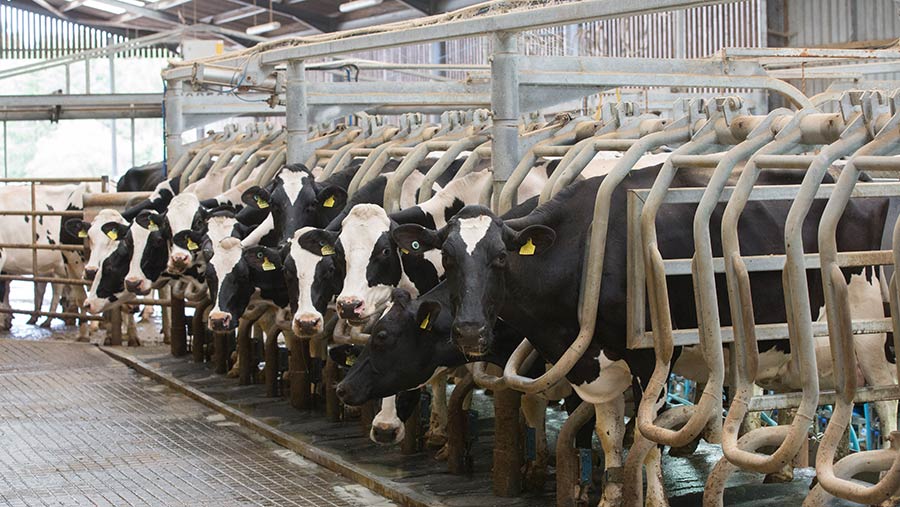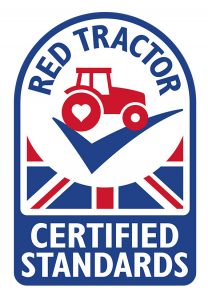Red Tractor scheme to move to remote compliance checks
 © Tim Scrivener
© Tim Scrivener Farmer members of the Red Tractor scheme, and those who have applied to join, will soon be asked to undertake remote assessments, using their smart phones to give assessors a guided tour of their farms.
The food assurance body has, so far, carried out about 40 trials of the new system across all sectors, aiming to provide an alternative to physical inspections, which were suspended on 20 March in line with coronavirus social distancing advice.
See also: Find all our coronavirus content in one place
Such has been their success, Red Tractor is now ramping up the programme, with hundreds of remote assessments planned over the next three weeks, before a general rollout in May.
Briefing journalists on Thursday 16 April, Red Tractor chief executive Jim Moseley said he fully understood that farmers were primarily focused on producing food for the nation at this time of crisis.
But farm assurance was still essential, to guarantee the safety and integrity of food entering the supply chain, not least to avoid putting further pressure on an already stretched NHS.
Two options
To enable inspections to continue, farmers who are due an assurance assessment can avail of one of two options.
The first involves a pre-assessment, during which the farmer submits all relevant documentation in advance via Red Tractor’s portal or another secure file transfer site.
This will be followed by a video call, using WhatsApp or Zoom, to allow an assessor to carry out a visual inspection of the farm, without needing to attend in person.
Alternatively, members can opt to have the entire assessment, with all document reviews and inspections taking place at the same time via a video call with an assessor.
Benefits
Mr Moseley said that while some farmers may be daunted by a remote assessment, those that have trialled it have seen huge benefits in terms of timeliness and efficiency.
“We understand that this new approach will take time to bed in, but we are committed to working with our members and certification bodies to make sure remote assessments are as straightforward as possible.”
The approach, which has been agreed with certification bodies and other key stakeholders, could even continue after the coronavirus pandemic ends, he suggested.
Red Tractor auditing
 Routine assessments are carried out by independent certification bodies on farms at least once a year, so farmers can demonstrate they are maintaining the standards set out by the scheme.
Routine assessments are carried out by independent certification bodies on farms at least once a year, so farmers can demonstrate they are maintaining the standards set out by the scheme.
This is done via a combination of physical inspections of important areas of the farm, such as livestock sheds and chemical stores, as well as record-keeping. About 450 assessors carry out more than 60,000 inspections every year.
Q&A on remote assessments with Red Tractor
How long does the new remote assessment take?
It currently takes about the same time as a conventional site inspection, though as farmers get used to uploading their documentation, the actual time should come down.
How many new applicants have you had and where have they come from?
We’ve had 167 new applicants in the run-up to Easter, though we normally get 70 to 100 new applicants a month anyway. They have come from all sectors, for example, beef and sheep farmers who feared they might lose their markets and wanted to join, and dairy farmers, who may have been supplying local cafés but are now looking for new outlets.
Will it be compulsory to have a remote assessment?
If the circumstances on the farm make it impossible for there to be a remote inspection, for example, if the farmer is shielding from coronavirus, then, as at the moment, there will be a degree of flexibility. But once we are up and running fully, then this will be the regime.
How will I know if I have to have a remote assessment?
It is up to the certification body to make contact first. There will be no unannounced remote assessments.
What happens if I don’t have a smart phone or I lose the signal?
Most farmers will have a smart phone, or, if not, their children or neighbours can lend one. In the trials, we have found that if the farmer can’t get a signal – for example, when they go into a milking parlour – then the assessor will ask them to take a video and submit that remotely.
Why introduce remote assessing?
Red Tractor chief executive Jim Mosely said there were three main reasons for introducing remote assessment.
- To ensure continued compliance with the scheme standards. “As supply chains alter and there is pressure on the food industry to supply, we have a responsibility to ensure that people continue to have access to safe and responsibly-produced food.”
- To accommodate new applicants. “People who were supplying food service or other markets may now have switched to retail customers that do demand assurance. We needed to find a way to audit new applicants.”
- To avoid a backlog of inspections. “Typically, on farm, we complete between 180 and 200 per day, and we have inspections further along the supply chain. If we are unable to do any auditing for three to six months, that backlog is going to become huge.”
